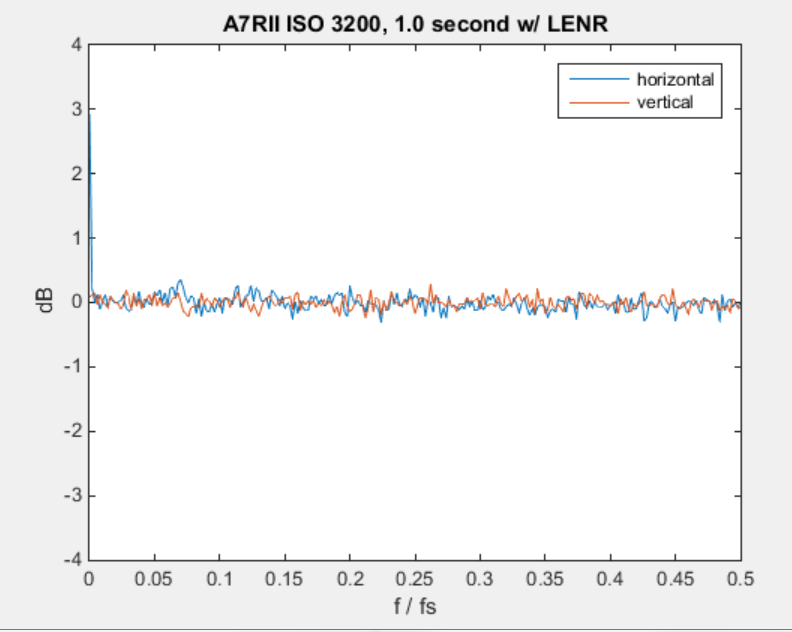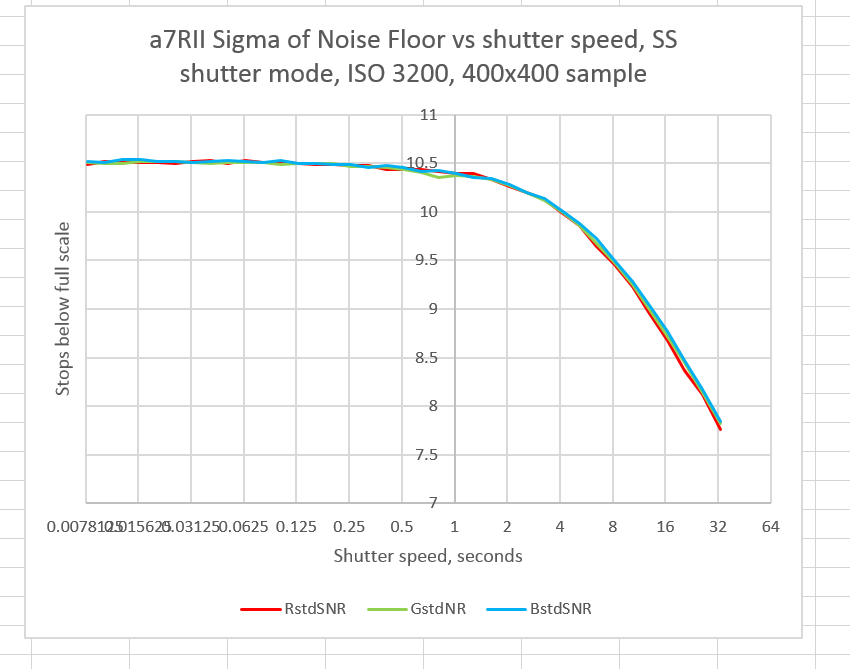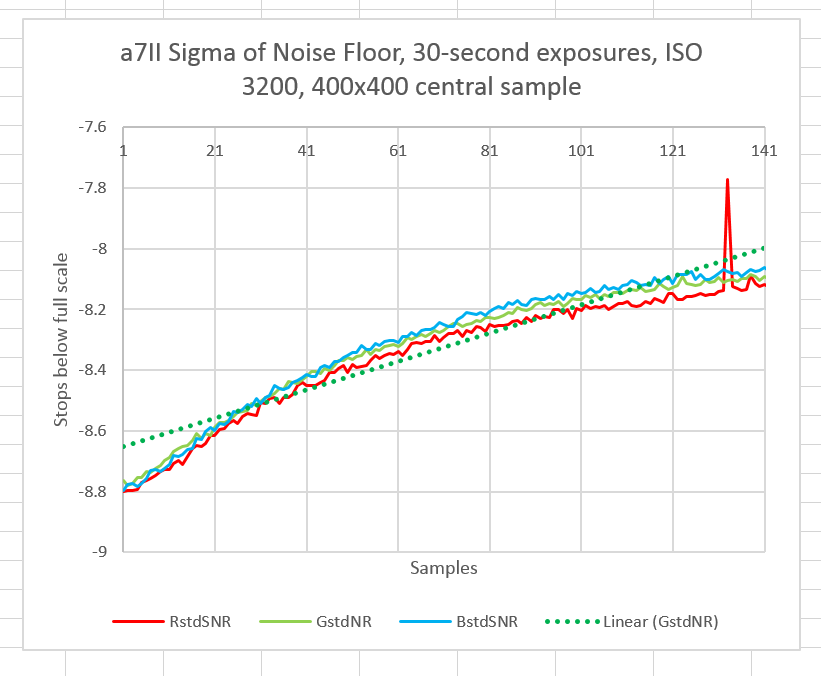We saw in the previous post that the long exposure noise reduction (LENR) option in the Sony a7RII reduced the precision from 13 to 12 bits. We have previously seen that some 12-bit modes bring spatial filtering to the a7RII. Is LENR one of them? Here’s the spectrum of a 1000×1000 sample from the center… [Read More]
Sony a7RII long exposure noise reduction
I’ve had a couple of questions about the long exposure noise reduction (LENR, aka dark-frame subtraction) in the a7RII. I’ve had to do some research, since I never have used this function in any alpha 7 camera. It’s not that LENR is useless, just that its usefulness is limited, and that the kind of photography… [Read More]
Autofocus on the a7RII
The Sony alpha 7 R Mark II (a7RII) has a new autofocus system that combines contrast-detection and phase autofocus with about 400 (the mind reels — how do they cover these up in the raw files?) phase detection autofocus points. The new system has eye detection added to the old face detection, which I never… [Read More]
Comparing a7RII and a7II long exposure self heating
One question that naturally arises from the last few days’ read noise self-heating tests is how to compare this a7II curve: With this a7RII curve: First off, we have to deal with the resolution differences. The a7RII image is 8000 pixels wide. The a7II image is 6000 pixels wide. So the a7RII looks log2(8000/6000) =… [Read More]
a7II self-heating for long exposures
In this post, we saw a pronounced self heating effect in the dark noise of successive 30-second exposures with the Sony a7RII. I repeated the test with the predecessor camera, the a7R, and found far less effect. A reader postulated that the difference might be lower thermal conductivity between the sensor and the camera chassis… [Read More]
- « Previous Page
- 1
- …
- 169
- 170
- 171
- 172
- 173
- …
- 381
- Next Page »



